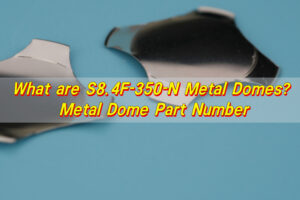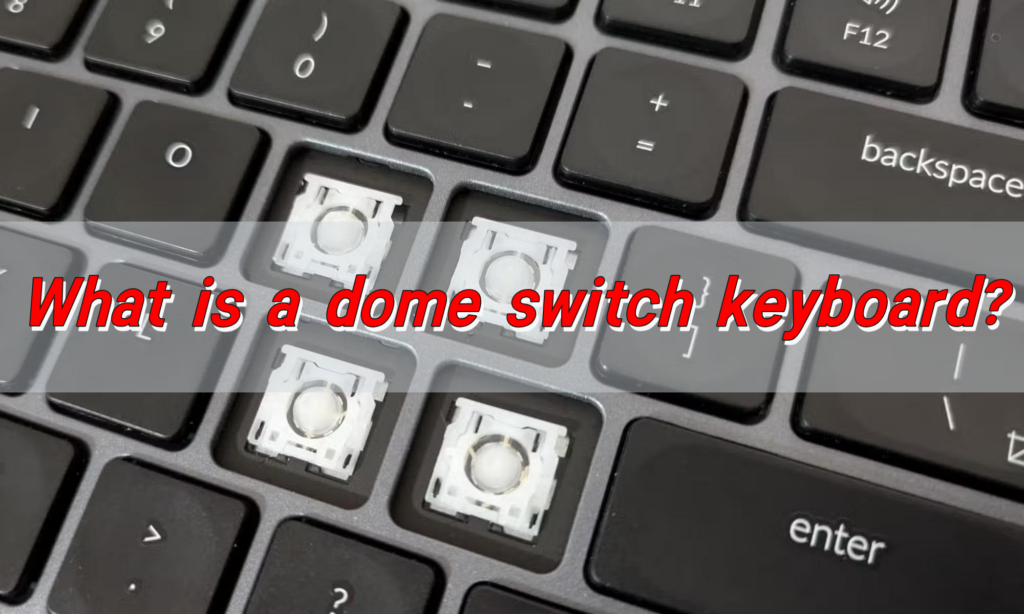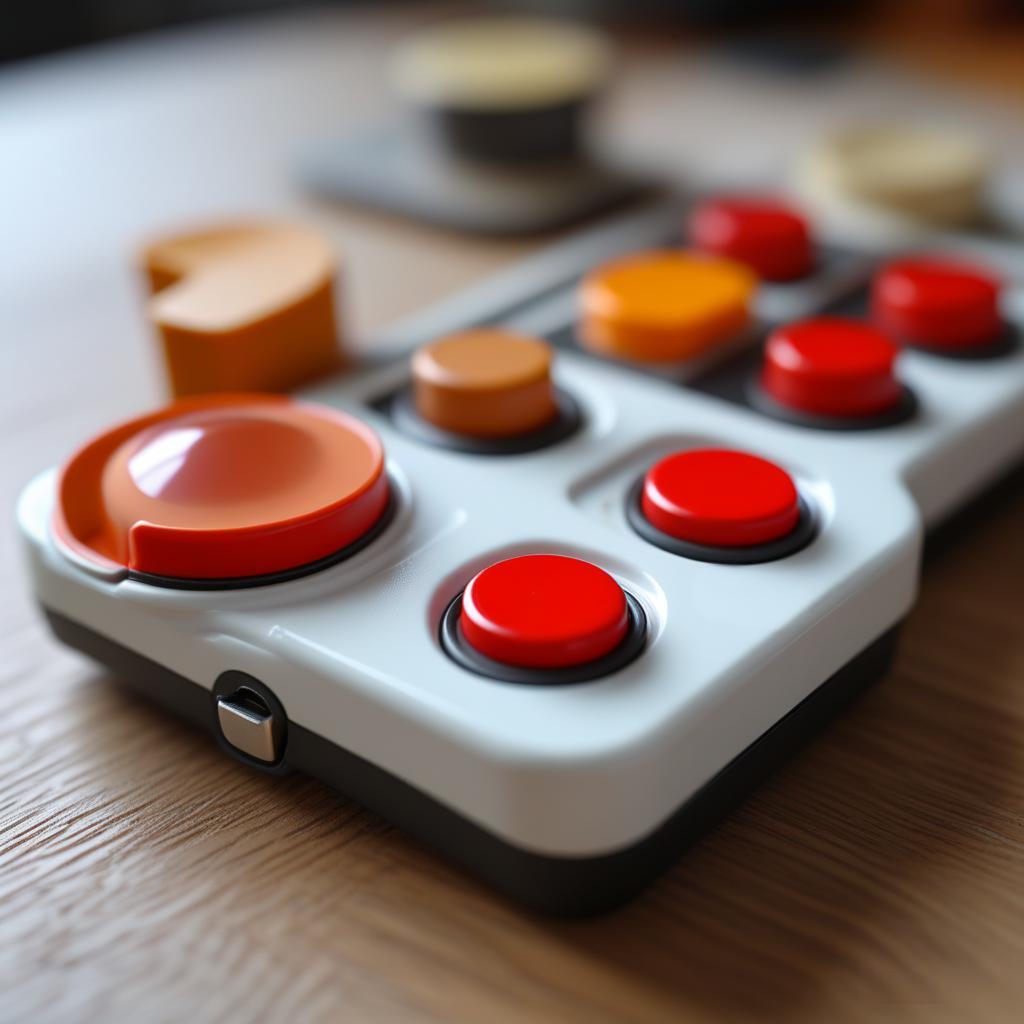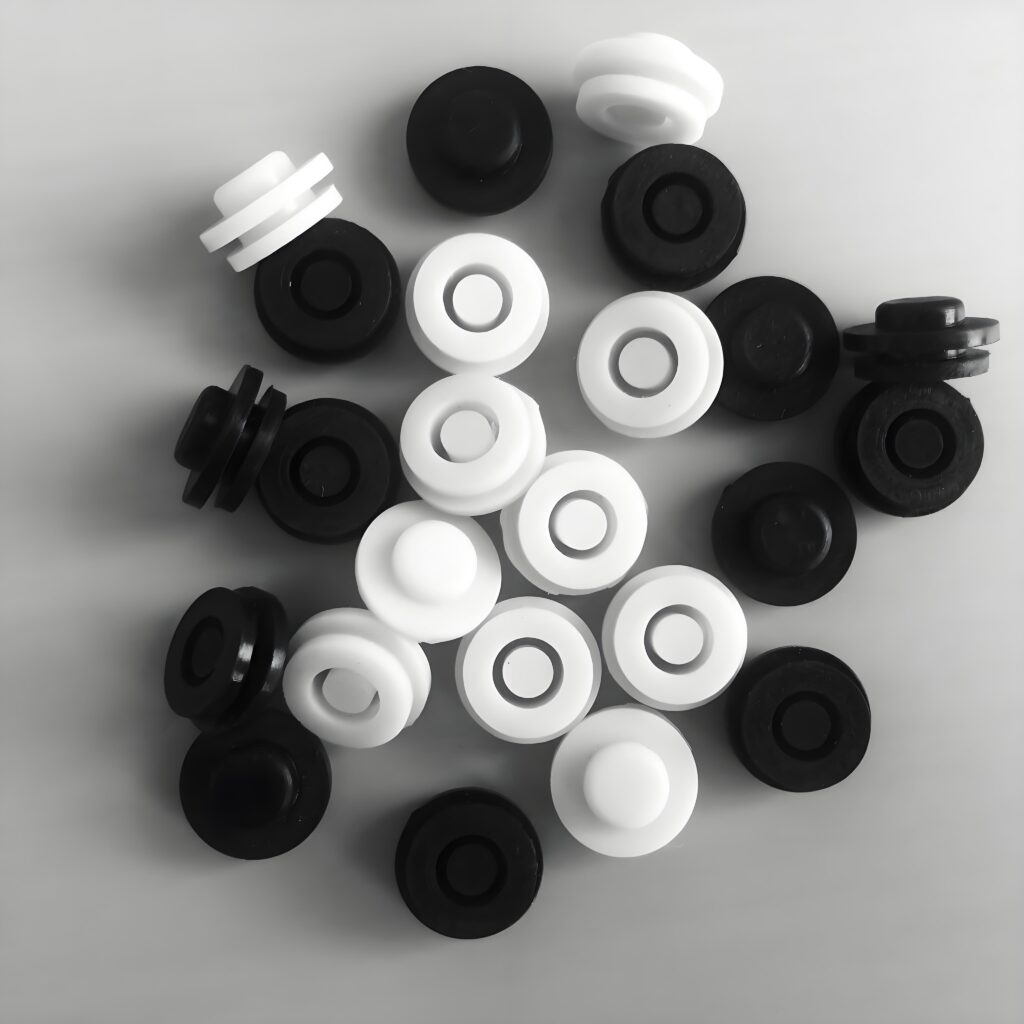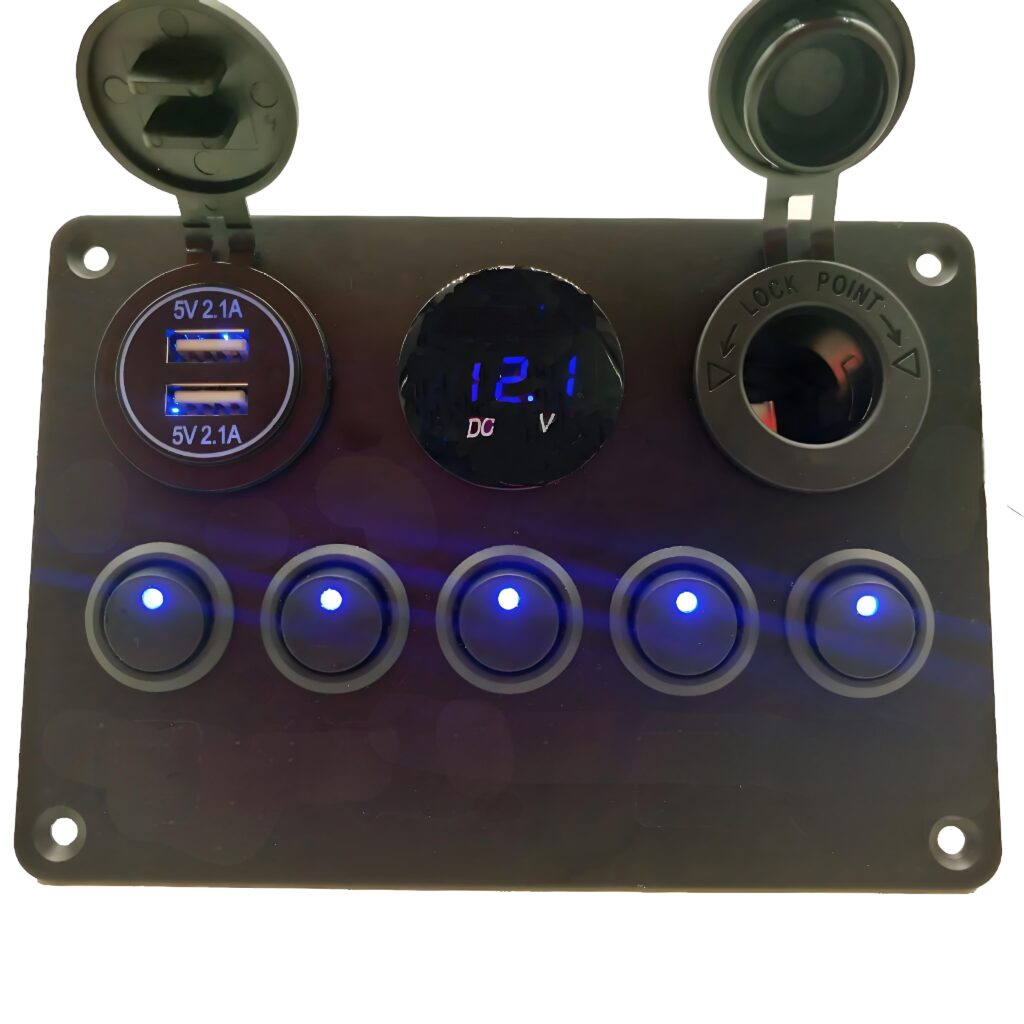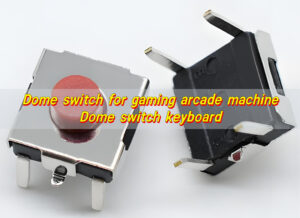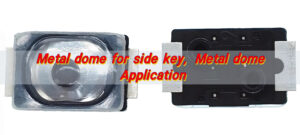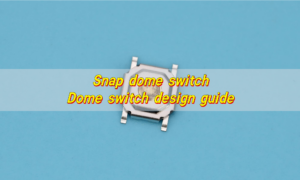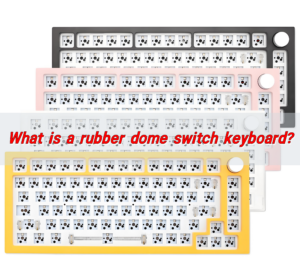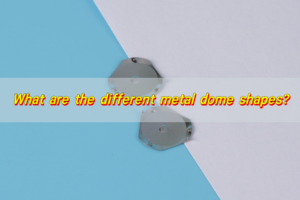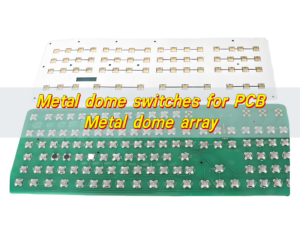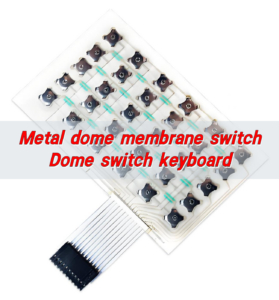Dome switch keyboards are composed of multiple keys, with metal or rubber dome switches as the core. Metal domes are durable and have good tactile feedback, while rubber domes are low-cost and flexible. Both have their own advantages and disadvantages and applicable scenarios.
Metal dome switches are commonly found in computer keyboards, laptops and other devices, providing precise key feedback; rubber dome switches are widely used in handheld controllers, mobile phones, automobiles and other fields.
What is a dome switch keyboard?
In simple terms, dome switch keyboard is a keyboard that uses rubber or metal domes under the keys. When you press a key, the dome collapses, sending a signal to the circuit below. Once you release the key, the dome pops back into place, ready for the next command.
Unlike mechanical keyboards, which use individual switches under each key, dome switch keyboards offer a smoother and often quieter experience. They’re also more cost-effective and better suited for custom interface applications like industrial equipment, medical interfaces, or automotive systems.
Are dome switches good?
Yes, dome switches are highly effective—especially in the right environment. These keyboards are known for their slim design, cost efficiency, and reliability. They perform well in both industrial and commercial settings, from ATMs to control panels.
One of the key advantages is their tactile feedback. While not as “clicky” as a mechanical switch, the keyboard dome switch provides a noticeable press.
In addition, dome keyboards offer a high level of customizability. So whether you’re designing for a medical device or a rugged outdoor system, these switches adapt easily.
Their silent operation is another plus. If noise is a concern—like in hospitals or customer-facing devices—rubber dome keyboard switches are a solid choice.
How do dome switches work?
The mechanism is simple yet efficient. Each key has a dome underneath—either rubber or metal. The dome acts as a spring. Pressing the key flattens the dome, creating contact with the printed circuit board (PCB) beneath.
This contact closes an electrical circuit, sending the input signal. When pressure is removed, the dome pops back to its original shape.
Metal domes offer crisp feedback and a longer lifespan, while rubber domes provide a softer feel. The dome itself determines the typing experience, making it the core component of the entire system.
What are the pros and cons of rubber dome keyboard switches?
Rubber dome switch keyboards come with a set of strengths. One major benefit is affordability. Compared to mechanical systems, they are cheaper to produce and replace.
They’re also quieter. This makes them ideal for environments where sound control is important. In public areas, medical fields, and offices, they reduce noise pollution.
The slim profile is another positive. These switches allow for compact, lightweight designs. That’s why they are often used in portable devices or tight installations.
Moreover, the tactile feedback they provide improves user confidence. The press feels intentional, reducing accidental key activations.
However, like any technology, they have limits. Over time, rubber domes may wear out faster than metal ones. If used in high-frequency applications, key feel might degrade.
Still, with quality materials and good design, even rubber domes can last for millions of cycles. And since they’re easy to replace, maintenance remains manageable.
How is a rubber dome switch keyboard different from mechanical ones?
The biggest difference lies in how each key registers input. A mechanical keyboard uses a full switch under each keycap. These switches have metal springs, making them louder and bulkier.
In contrast, a rubber dome switch keyboard uses a single sheet or layer of rubber domes. Each dome compresses and bounces back with a soft feel.
Mechanical keyboards are often preferred by gamers and programmers for their speed and accuracy. But dome switch keyboards dominate in fields where custom shapes, silence, and durability are more important than speed.
They’re also easier to clean and seal. In dusty or wet environments, dome switches hold up better.
When should you use a dome switch keyboard?
You should consider a dome switch keyboard when custom function, durability, and quiet performance are needed. For instance, in the automotive industry, car dome light switches use dome keypads to control cabin lights.
In the medical sector, silence and hygiene are crucial. Dome keyboards with sealed surfaces reduce contamination risks while maintaining usability.
Control systems in factories, elevators, and security panels benefit from dome switches due to their ability to withstand harsh conditions. They’re also easier to integrate into custom designs, whether curved panels or tight dashboards.
What is the lifespan of a dome switch keyboard?
Lifespan depends on materials. Rubber dome switches typically last for 1 to 10 million keystrokes. High-quality versions push the limit further, especially with proper design.
Metal dome switches perform even better. They can reach up to 5 million presses or more per key without losing their snap. And because they’re more resistant to fatigue, they maintain consistency over time.
Even after thousands of cycles, good dome switches don’t lose responsiveness. For users, this means years of reliable performance, even under intense conditions.
Whether it’s a dome keyboard switch on a vending machine or an access control panel, the lifespan ensures minimal downtime and fewer replacements.
Where are dome keyboard switches commonly used?
In healthcare, you’ll see them in diagnostic equipment, patient monitoring tools, and surgical interfaces. Their smooth operation and sealed surfaces keep environments sterile.
In consumer electronics, rubber dome switch keyboards appear in remote controls, thermostats, and microwaves. They balance affordability with functionality.
Factories rely on dome keyboards for machine interfaces, while ATMs and kiosks benefit from their reliability in public settings. Even military-grade electronics use metal domes for their precision and resilience.
The automotive world also depends on them. From steering wheel controls to lighting panels, dome switches offer tactile feedback while withstanding temperature shifts and vibration.
Wherever durability, tactile feel, and compact design matter—dome keyboards deliver.
Conclusion:
Whether you’re working on a new product or upgrading an interface, choosing the right keyboard matters. Dome switches provide the perfect balance between function, cost, and user experience.
Their adaptability to harsh environments, high cycles, and sleek design makes them the smart choice for many professionals. Want to learn more or design your own dome switch keyboard? Reach out to us at sales@metal-domes.com


